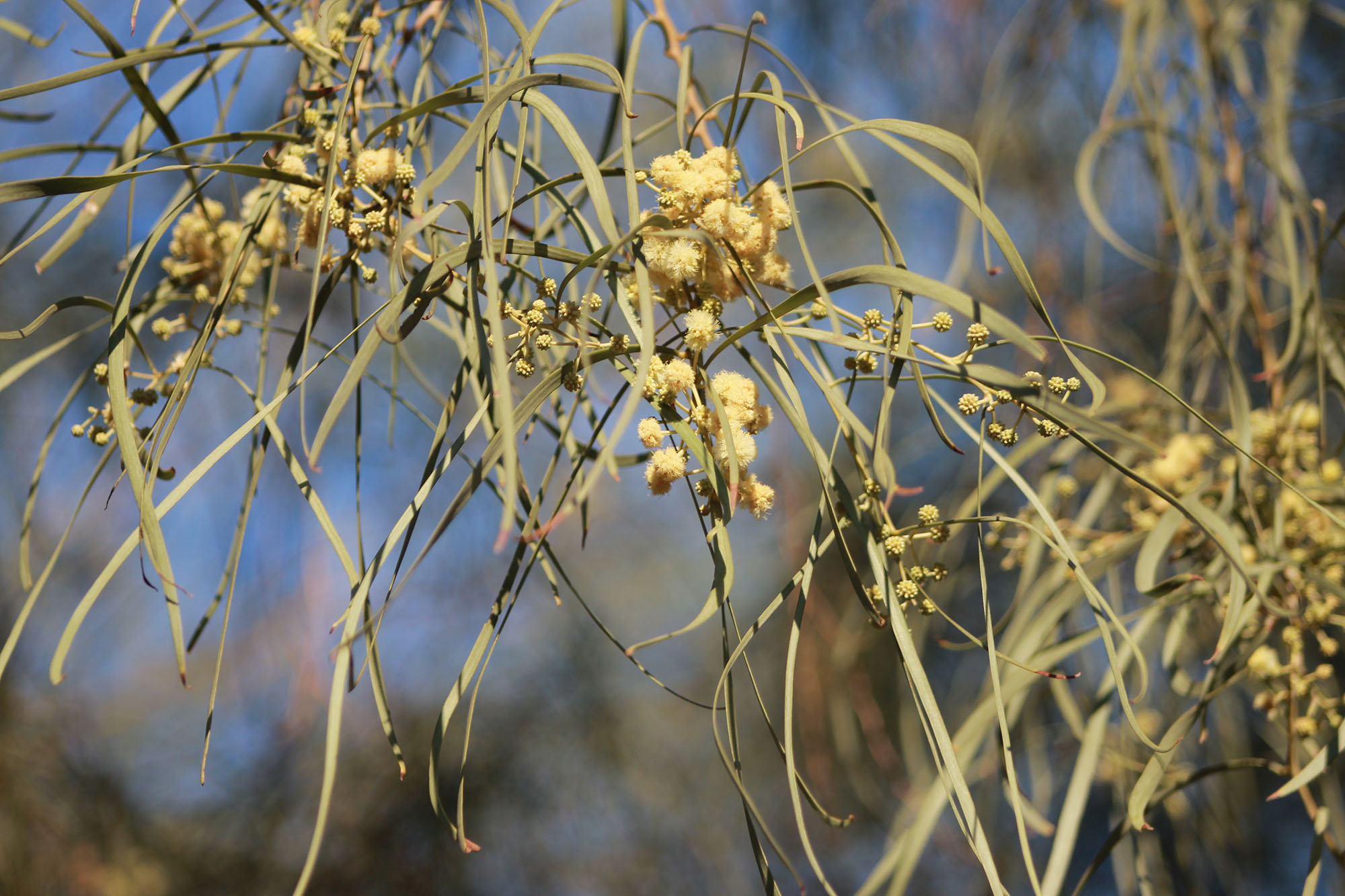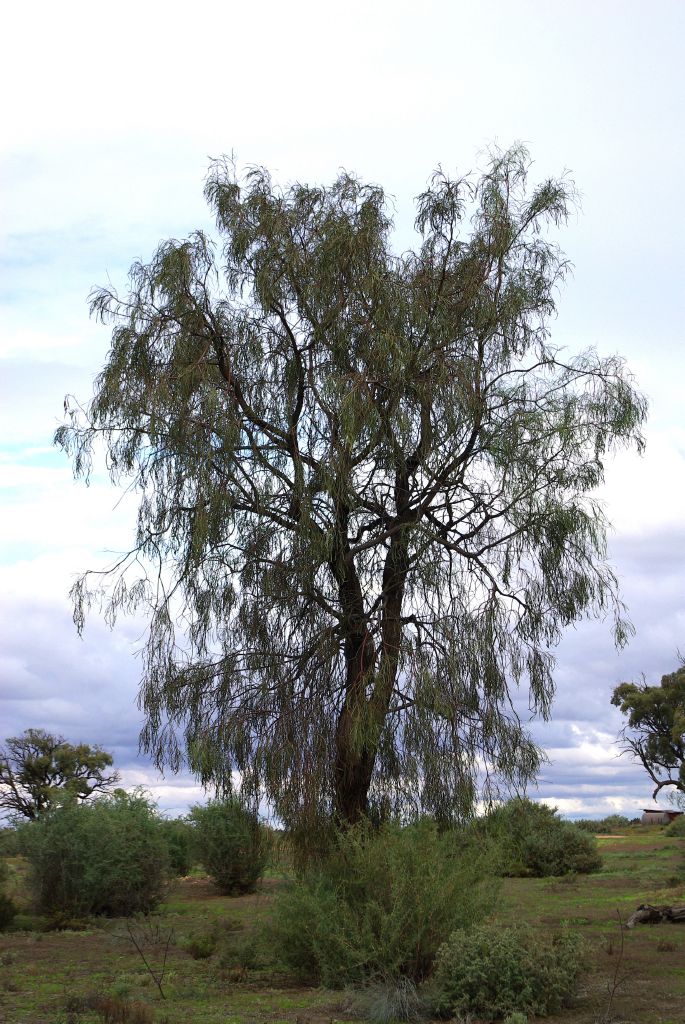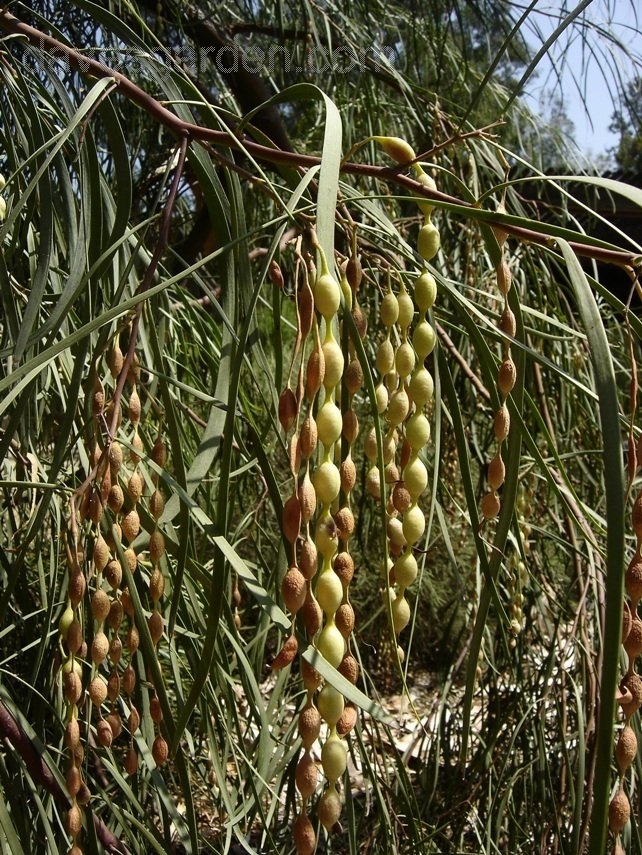Erect shrub or tree that grows up to 20 m high. Usually has a single trunk 15 - 20 cm in diameter at breast height, with pendulous branches. Bark of main trunk is grey and longitudinally fissured, while other branches have smooth, pale green bark.
Leaves
Phyllodes (flattened leaf stems) are long (15 - 40 cm) and thin (2 - 7 mm), straight to weakly curved, dark green and pointed. Veins numerous, closely parallel, narrower than intervein spaces.
Flowers
Flowers form groups of 25 - 40, forming inflorescences (flower clusters) cream in colour.
Fruits/Seeds
Seed pods moniliform (jointed or constricted at regular intervals so as to resemble a string of beads); become woody as they mature. They contain 6 - 12 viable seeds.
Field Guide
Improve your identification skills. Download your River Cooba field guide here!




